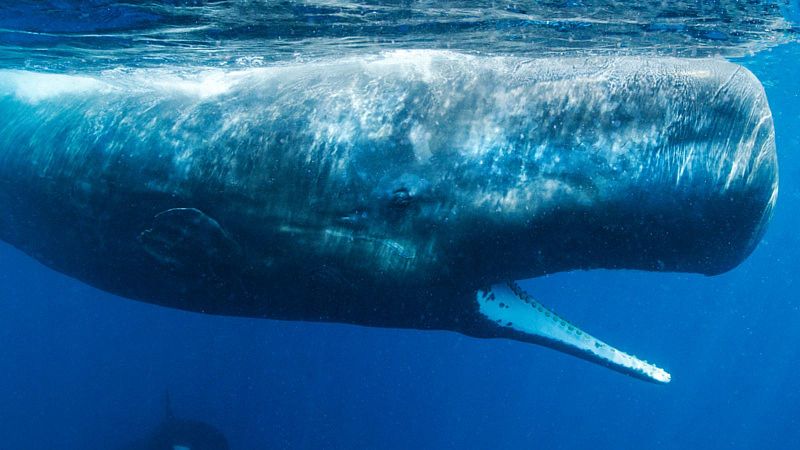
Two areas being targeted for deep sea mining in the Pacific Ocean are home to dolphins and threatened whales, a new scientific survey reveals.
Sperm whales, listed as vulnerable by the IUCN, are among the marine creatures at risk if The Metals Company’s mining plans go ahead, it says.
The survey by researchers from the University of Exeter and Greenpeace Research Laboratories has been released amid rising concerns about deep sea mining, and ahead of an International Seabed Authority (ISA) summit on the issue next month.
It involved a 13-day mission by Greenpeace International’s Arctic Sunrise ship to two exploration blocks in the Pacific’s Clarion-Clipperton Zone (known as NORI-d and TOML-e). These blocks are held by the US company, which says it is developing the world’s largest estimated source of metals for batteries.
“We already knew that the Clarion-Clipperton Zone is home to at least 20 species of cetaceans, but we’ve now demonstrated their presence in two areas specifically earmarked for deep sea mining by The Metals Company,” explains lead author Dr Kirsten Young of the University of Exeter.
The battleground over deep sea mining
The seafloor has reserves of minerals in sea mounds and nodules that proponents say are necessary to make the batteries and electronics for the green transition.
But conservationists argue that mining the seafloor will do irreversible damage to precious marine environments, and that taking a circular economy approach means we shouldn’t need all the cobalt, manganese and other elements to be found there.
The ISA conference in Jamaica next month will seek to finalise and adopt the long-awaited Mining Code - a set of regulations governing how mineral extraction in areas beyond national seas could go ahead.
Some European countries have a moratorium on deep sea mining, and Portugal has issued a binding national ban on the practice.
But during this time of regulatory uncertainty, some actors have been pressing ahead.
After President Trump approved deep sea mining with an executive order in April, The Metals Company applied to the US government to give it unilateral permission to commercially mine the international seabed in the Clarion-Clipperton Zone.
How could whales and dolphins be hurt by deep sea mining?
“The Metals Company’s plans to mine the seabed in the Pacific are not only a slap in the face for multilateralism and international law, science confirms they would expose some of our most iconic, charismatic and beautiful marine life to noise and other forms of pollution if allowed to go ahead,” says Louisa Casson of Greenpeace International.
Using hydrophones, the research team confirmed 74 acoustic detections of cetaceans. This included a sperm whale, Risso’s dolphins and common dolphins.
Cetaceans are known to be impacted by noise pollution caused by humans, and could be hurt by the significant noise expected to be created by deep sea mining operations. These operations would also generate sediment plumes, which could impact cetacean populations by disrupting deep ocean food systems, the researchers warn.
“While more research is needed to build a complete picture of the impact of the noise and sediment plumes on cetaceans, it’s clear that deep sea mining operations will negatively impact ocean ecosystems in areas far out to sea where monitoring is particularly challenging,” adds Dr Kirsten Young.
The UN Ocean Conference in France earlier this month saw the number of countries calling for a moratorium on deep sea mining swell to 37, with Cyprus, Latvia, Cyprus and Marshall Islands adding to the chorus of disapproval.
A spokesperson for The Metal’s Company comments: “When it comes to deep-sea mining, the loudest source of noise isn’t our vessels - it’s activist groups determined to drown out science with speculation.
“We've long known of the occasional presence of such mammals in our contract area, with many years of in-situ acoustic monitoring alongside marine mammal observation during 2022 test mining.
“This latest paper - which echoes a near-identical paper published by the same authors on the eve of an ISA meeting only two years ago - fails to mention that verified in-field data shows that noise levels capable of influencing mammal behaviour don't travel many hundreds of kilometres - they're confined to just 3.8 kilometres.”







